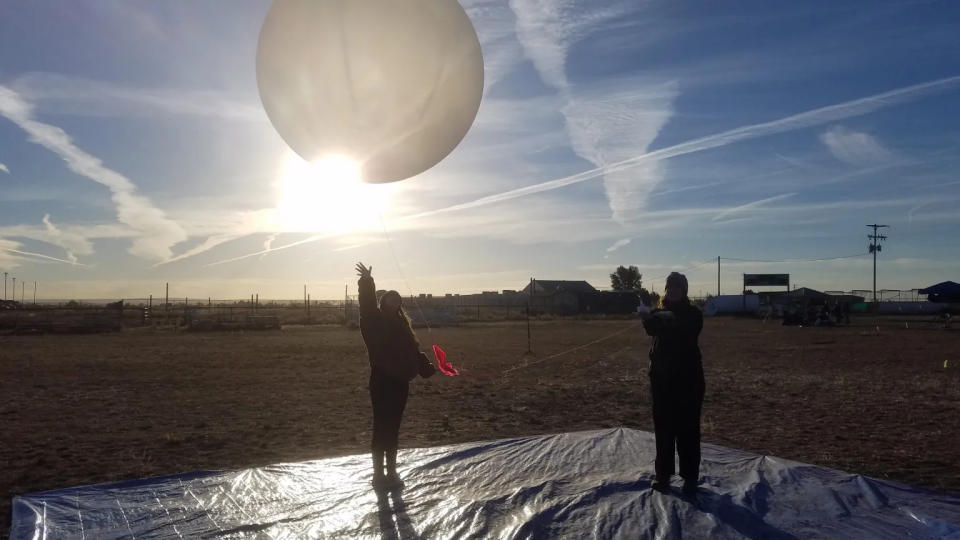When you buy through links on our articles, Future and its syndication partners may earn a commission.

College students’ measurements during a “ring of fire” solar eclipse last year have confirmed a long-held prediction about mysterious gravity waves in Earth’s atmosphere.The students confirmed the prediction by identifying a signature of the waves in data obtained from the NASA-sponsored Nationwide Eclipse Ballooning Project (NEBP) during the annular solar eclipse on Oct. 14, 2023.
New Mexico was the ideal location to connect the dots between the solar eclipse and the creation of atmospheric gravity waves — ripples that occur in Earth’s atmosphere. (These should not be confused with gravitational waves, which are ripples in space-time first proposed by Albert Einstein.)
Related: NASA balloon observes glowing blue clouds in Earth’s upper atmosphere (video)
“New Mexico looked especially promising,” Jie Gong, a researcher in the Climate and Radiation Laboratory at NASA’s Goddard Space Flight Center in Greenbelt, Maryland, and co-investigator of the research on atmospheric gravity waves, said in a statement. “The majority of atmospheric gravity sources are convection, weather systems, and mountains. We wanted to eliminate all those possible sources.”
Starting the day before the eclipse, the teams worked in shifts to release a balloon every 15 minutes. The instruments aboard each balloon measured the temperature, humidity, wind direction and speed, and location throughout the different levels of Earth’s atmosphere. After studying the information closely for months, the teams identified a pattern indicating that atmospheric gravity waves had occurred.
“We put all the data together according to time, and when we plotted that time series, I could already see the stripes in the signal,” Gong said. “I bombarded everybody’s email. We were quite excited.”
The students’ discovery could help improve weather forecasting.
Related Stories:
—Megadrought on Earth affected gravity waves at the edge of space
—Why is Earth’s weather getting weirder?
—What makes Earth’s atmosphere so special?
“Climate models are complicated, and they make some assumptions about what atmospheric factors to take into account,” Angela Des Jardins, director of the Montana Space Grant Consortium, which led the NEBP, said in the statement. “Understanding how the atmosphere reacts in the special case of eclipses helps us better understand the atmosphere, which in turn helps us make more accurate weather predictions and, ultimately, better understand climate change.”
Source Agencies


